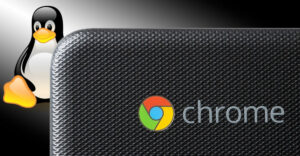
If you’re used to Microsoft’s stratospheric pricing email program — Outlook alone isUS$139.99 estimated retail — take a look at the small print at Microsoft’s Windows 8 website, and you’ll see that a Windows 8 Pro upgrade can be downloaded for a limited-time at the measly price of $39.99.
This is a surprising bargain from the monolith — and a significant change in direction fromthe $100-plus upgrades we’ve been used to.
So, grab that bank card and jump in. Here’s how to approach an install.
Step 1
Browse to the Microsoft Upgrade to Windows 8 website. Then run the Windows8 Upgrade Assistant on the computer that you intend to use.
Tip: If you’ve recently bought a new Windows 7 PC, the $39.99 deal probably is not for you. You’re likely eligible for a $14.99 deal from Microsoft instead.
Step 2
Allow the Upgrade Assistant to run and check applications — now called “apps” –and devices for compatibility. Then click on the “See Compatibility Details” link andreview the list.
Start researching items shown by performing a Web search. Find out what drivers and software updates, if any, are available for legacy gear.
A printer driver that’s marked “not compatible” could end up costing you the price of anew printer. Printers are cheap these days, so it may not matter. However, this is a goodtime to bail if the list is long and you get cold feet.
Tip: Print the list before closing it — it may be the last time your printer works.
Step 3
Choose the prior OS files you want to keep. The Upgrade Assistant will prompt you tochoose between Windows settings, personal files and apps, personal files and nothing.
Windows 7 PC apps will easily transfer to Windows 8. In the case of a Vista or XPupgrade, you will need to manually install apps after the operating system installs.
Step 4
Click on the “Next” button and choose the 2 GB digital download. Allow the processes totake place and follow the prompts.
Determine the version that you are going to need:
Windows RT is only available pre-installed on ARM-processor tablets and PCs. ChooseWindows 8 Pro if you want an OS oriented to data protection, remote desktop connectionor corporate network connections.
Tip: All of the Windows 8 operating systems are touch-enabled, although you need a PC that supports multitouch to use it.
Enterprise-Level Solutions
Microsoft provides enterprise versions of Windows 8, too. Software Assurance customerscan obtain the OS from Microsoft’s Volume Licensing Service Center (VLSC) where youcan download products and keys. Access the VLSC center with a Microsoft Live ID andpassword.
Other methods for obtaining Windows 8 Enterprise are through a Technet Professional subscription, or Microsoft developer network (MSDN) subscription. Technetsubscriptions include courses, start at $199, and help IT people plan deployments.
MSDN can be accessed with a Live ID, and subscriptions start at $699. A subscriptionprovides software for development and testing, support via forums, SDKs and other tools.
If none of the IT and developer solutions sound particularly attractive and you’re notsold on the $39.99 single-PC upgrade, you can download a 90-day evaluation copy ineither 32-bit or 64-bit from the TechNet Evaluation Center.
The program is called “Springboard Series.” Click on the link to the version that you need.
Large-scale deployment?
Helpful deployment resources include the Microsoft Development Toolkit for 2012,which includes Windows 8 support. This tool assists in deployment of Windows 8 acrossmultiple desktops and servers.
Download the app and choose Getting Started from the Information Center within theDeployment Toolkit to get started on the considerable learning curve and prepare anMDT infrastructure.
Want to Ask a Tech Question?
Is there a piece of tech you’d like to know how to operate properly? Is there a gadget that’s got you confounded? Please send your tech questions to me, and I’ll try to answer as many as possible in this column.
And use the Talkback feature below to add your comments!






















































You can’t charge a lot for a OS that nobody really needs. Apple decided a couple versions of OS X ago that you can get more users to keep upgrading to the latest creation by making the costs palatable.
Maybe Microsoft finally figured out that most of us know that they don’t create a OS from scratch and much of the development is adding and cutting stuff in the many lines of code. But in the end all users care about these days is that their web browsers work and programs and apps open and run. The OS is much more mature and the core does not change that much anymore. I don’t personally like Windows 8 but I commend Microsoft for realizing that those that do want it should not have to pay $100 for it. People complain less when they hate something if they did not spend a lot on it.